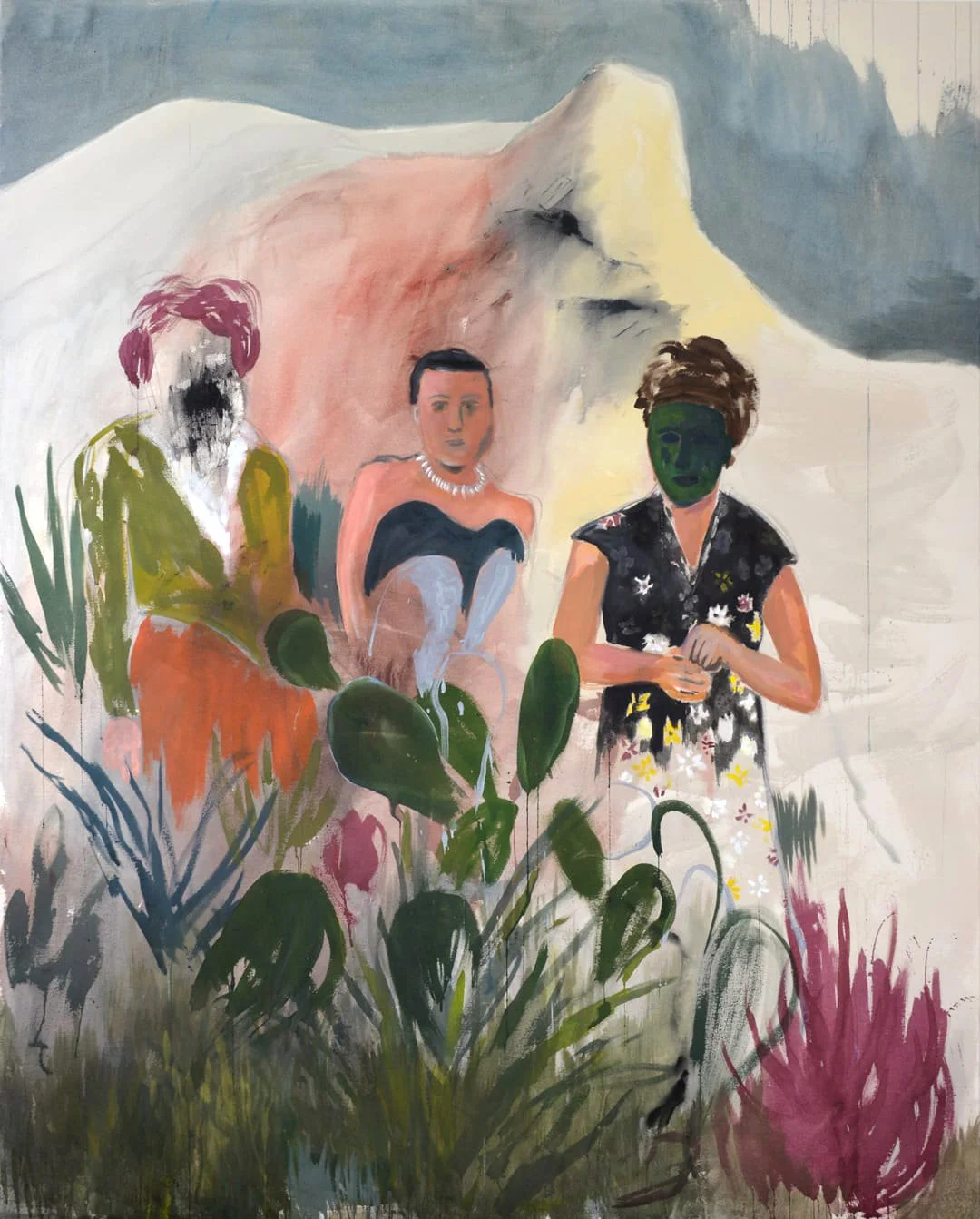Discover the rising new generation, the perfect artist to collect today.
Samuel Bloch paints canvases on the frontier of abstraction that give free rein to the imagination.
He studied graphic design at the London College of Communication and graduated in 2017. Since then he has discovered painting and now devotes most of his time to exploring this technique.
The Studio. (2023), 51 x 59" (130 x150cm), acrylic on canvas. $5,900
Michele Mariaud Gallery: Your work is very prolific and varied, what are your sources of inspiration?
Samuel Bloch: When I started painting, I was drawn to painters who were very expressive in their gestures, like de Kooning for example. So it was the gesture that interested me most in painting, because originally I did a lot of drawing and I wanted to project my work onto larger formats, adding color as well. What I really liked when I was drawing was the freedom, almost going towards abstraction. Then I became very interested in 20th-century expressionism, with painters like Munch for example who influenced me a lot, or like Kirchner. And finally, beyond the movements, it's individual artists, through different periods, with varied styles that inspire me, like Philip Guston, a painter of the New York School.
Playground (2022), 51 x 59" (130 x150cm), oil paint on canvas, $5,900
MM: Moving towards abstraction... and yet there always remains a figurative aspect in your works, there are always characters, even if they are imaginary characters...
Samuel Bloch: Yes, it's a bit paradoxical. Generally, I draw inspiration from reality, from photos or things I observe. I start with drawing, then move on to painting. I prefer starting from these types of materials because it also allows me to free my mind a bit, and in the end, it's often more fluid. Even if it's imaginary, I like to keep the figurative aspect. It helps to better connect with the artwork. In fact, I usually can't create completely abstract things.
The Imaginary Museum (2023), Diptych, 63 X 110" (170 x 280cm), oil on canvas, $6,300
MM: Drawing remains your foundation for capturing the moment, isn’t it?
Samuel Bloch: Yes, because I often work quickly, it's a way to have something instantaneous before starting to work longer on a large format. It also helps to lay down foundations, it helps me to structure even if I'm not trying to create something very realistic.
3 Sisters, (2024), oil on canvas, 59 x 51” (150 x 130cm), $5,900
MM: In your work, different series and techniques appear—large oil paintings, monotypes on paper or canvas, etc. Is this temporal or do you work on multiple projects simultaneously? Samuel Bloch: It's clearly in phases, not really linear. Sometimes I return to certain things I've done in the past. I like to explore different ways of painting. It's the subjects that change, rather than my way of painting, although that evolves too.
UNTITLED VII (2022). Monotype, 25.6 X 19.7” (65 x 50cm), ink and oil on paper, $950
MM: You use the Monotype technique a lot, could you explain how? Samuel Bloch: Monotype is a single impression print, where a surface is inked and then transferred by hand directly onto paper or canvas; there's no engraving involved. This allows for an original with a unique texture, one that you don't get with traditional printmaking—it also brings a bit of unpredictability, which is part of its appeal. I use this technique in a different way, leaning more towards painting than drawing. For portraits, for example, I apply my paint directly onto the plate and then press it for printing, using oil paint because acrylic dries too quickly.
SELF PORTRAIT (2022). Monotype, 29.5 X 23.5”, (75 x 60cm), ink and oil on paper, $950
MM: And for your latest monotypes on canvas where there's also a fantastical aspect?
Samuel Bloch: It's the same technique on raw cotton canvas, but then I work over it with oil paint. For this series, I started with photographs of sculptures from all periods, all civilizations, and I liked extracting expressions that I found in these photos, to then integrate them into truly surreal paintings.
Wonderland (2023) Monotype, oil on canvas, (20 x 28”, (70 x 50cm). $1,100.
MM: What are you working on at the moment?
Samuel Bloch: I'm doing intaglio printmaking for the first time on plexiglass using drypoint, and I'm also starting on metal. Additionally, I'm sculpting with clay, creating a series of small-scale oil portraits. I'm using the sculptures specifically to create 3D animations—I'm doing research to animate them.
MM: Do you enjoy constantly exploring?
Samuel Bloch: I try to build more precisely the "source materials," which I actually use as a basis of inspiration for painting. Right now, I'm also taking a lot of analog photos to collect images and have a database. And I continue to draw a lot; I go outside, I draw—that's always been the case!







